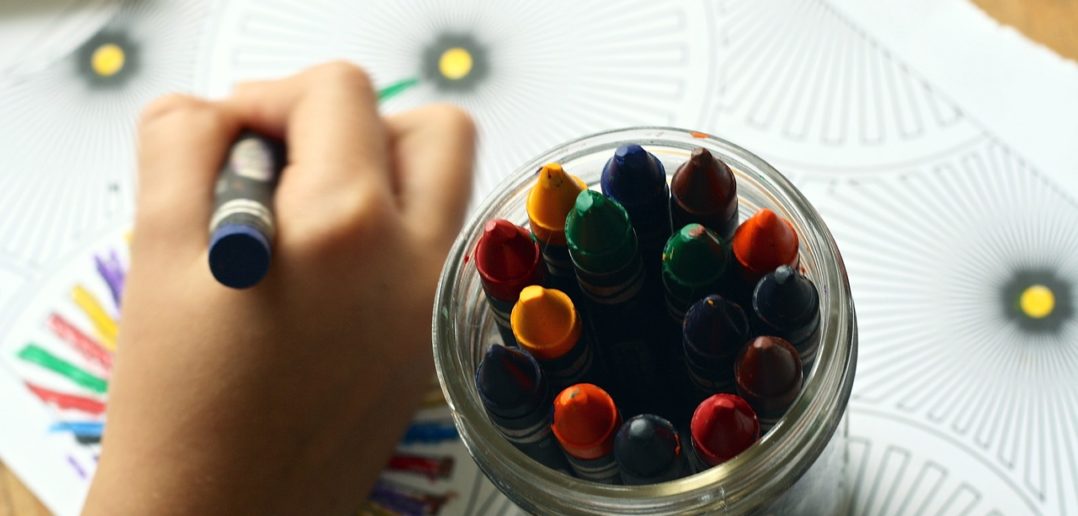Coping with chronic illness challenges even adult patients, so children diagnosed with certain lifelong disorders face an even more difficult time coming to terms with their physical reality. Children often lack the sufficient vocabulary to fully express their feelings in a verbal way. Those working with sickly children should learn to read their nonverbal cues as well as the words the kids say.
Art therapy offers a valuable way for children to process a range of emotions from anger to fear to elation. Mental health practitioners trained in art therapy can teach children effective coping mechanisms to manage their physical limitations as well as their pain. The Aberdeen Standard Investments Charitable Foundation recently covered the cost of providing children at Scotland’s Royal Hospital for Sick Children one-on-one art therapy sessions, and the success of this program may lead other medical centers to offer similar programs to children coping with chronic illness.
What Is Art Therapy and How Does It Work?
Art therapy works similarly to play therapy but focuses more on working through issues to create an end product versus simply working through emotions utilizing physical movement. Art therapy benefits children of all ages, even young toddlers with limited verbal language abilities because they can express their emotions in a nonverbal way.
Art therapy allows therapists to measure a child’s growth and development not based upon the quality of their drawings but by the techniques children use to create their art. Art lets children express their emotions through the use of metaphor, and children who have already been through traumatizing experiences often create fictional stories through art to express what they experienced in a safe way.
Art therapy is also a great option for helping children who suffer from anxiety disorders or phobias. Children often cope with very specific phobias that can be hard to understand if we don’t take measures to get through to them. Mental health professionals can utilize art therapy to help children overcome anything from a fear of going to school to more peculiar phobias like dental anxiety.
The Royal Hospital for Sick Children’s Art Therapy Program
In Scotland, a generous donation from the ASI Foundation allowed the Royal Hospital for Sick Children to partner with the Teapot Trust to provide art therapy to children hospitalized for chronic diseases. Many of the children suffer from rheumatological conditions such as Lupus in which symptoms flare up periodically rendering them incapacitated.
Children with chronic illnesses experience a range of emotions from feeling helpless to control their condition to feeling angry about the unfairness of their plight. By working one-on-one with a trained art therapist, children process these emotions and learn healthy coping mechanisms for difficult days. Additionally, art therapists can share the insight they gain from their sessions with parents and offer advice for how to redirect behavior into positive activities.
Art therapy also assists children with chronic conditions build the emotional resiliency required to cope with their illnesses going forward and to bounce back from bad flares. Art therapy relieves stress and can even alleviate anxiety and depression. Children who practice art therapy gain the ability to use introspection to unearth their true emotions and work through them in a positive manner.
Other hospitals have also established art therapy programs for the children they treat. At the Aster CMI Hospital in Bengalaru, India, doctors offer art therapy to help patients deal with the stress associated with chronic illness. The program intends to dissipate the frustrations these children feel when discovering they likely will never recover completely from their ailments.
Likewise, at the KK Women’s and Children’s Hospital in Singapore, art therapy aids children experiencing severe or chronic conditions cope with their physical limitations. Art therapists encourage children to use color to express their pain levels and to establish a sense of control over their condition.
Should these initial programs succeed in their endeavor to help chronically ill children, other hospitals and health care practitioners will follow suit by offering their own art therapy programs. Many psychiatric hospitals already utilize art therapy to help adults and children alike cope with difficult emotions, and expanding these programs for use with those who suffer from physical disabilities will require only additional personnel trained in these techniques.
Art therapy opens new doors when it comes to helping children cope with the difficult reality of a chronic illness. As more facilities implement art therapy to help children deal with their conditions, more kids will transform their pain and suffering into creative and colorful works of art.



